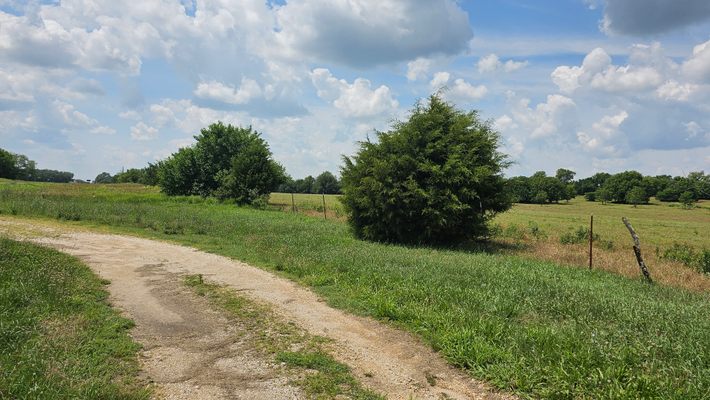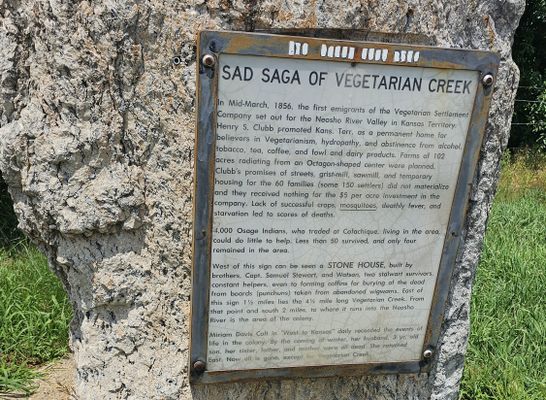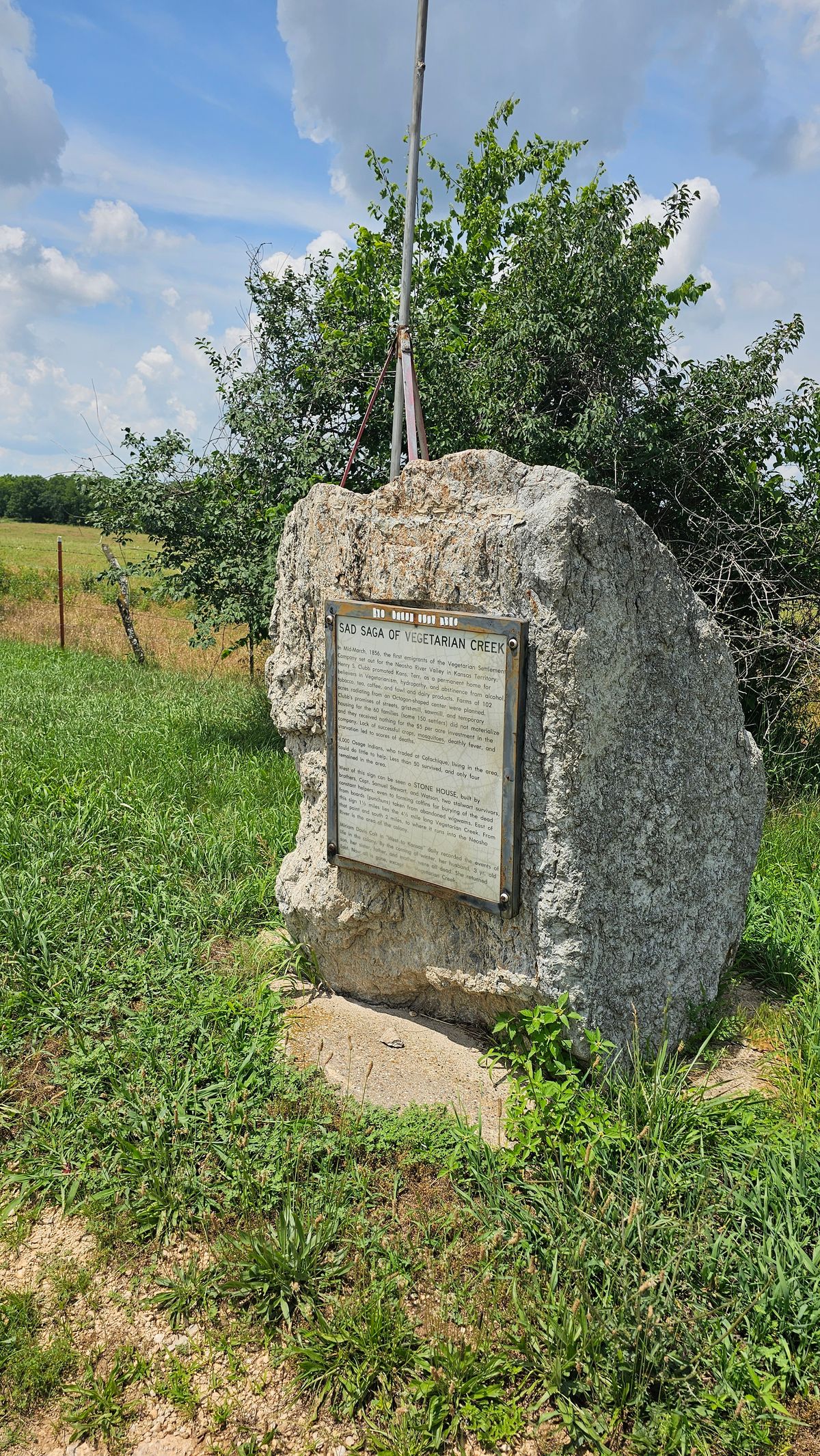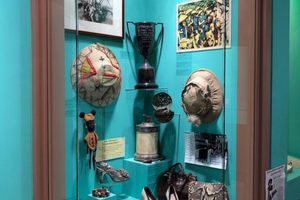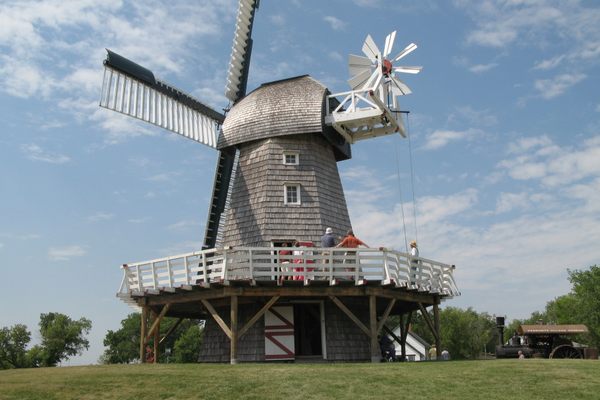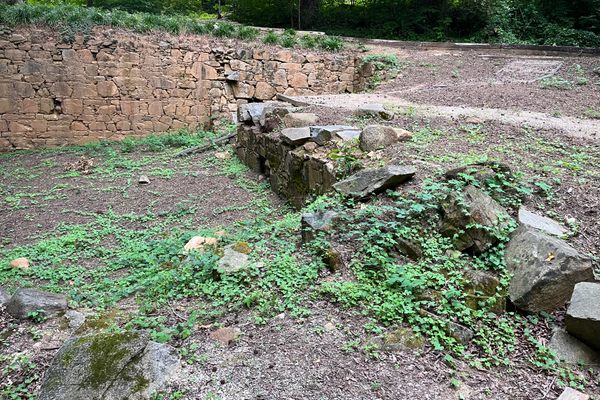About
This historical marker and the name of the nearby Vegetarian Creek are all that remain of Octagon City, Kansas, one of America’s earliest failed utopian societies.
The concept of vegetarianism has existed for millennia across many cultures, but in America, its rise was best associated with the ascendant temperance and abolition movements of the mid-19th century. For leaders in the movement, vegetarianism was a moral choice, much like abstaining from alcohol and tobacco. By the 1850s, the nexus of vegetarian thought leadership was found at the American Vegetarian Society in New York.
The establishment of the Kansas Territory in 1854 set off a land rush between slavers and abolitionists, leading to conflicts that became known as “Bleeding Kansas.” Seizing the chance to stake a claim for abolition and for vegetarianism, the Society founded the Vegetarian Kansas Emigration Company to establish a colony in Kansas that would become a home for their ideals. Leading the settlement company was their secretary, a British-American named Henry S. Clubb.
In 1855, Clubb began the task of soliciting funds and settlers for the project. He approached local business leaders to provide capital for infrastructure and housing, and posted ads in papers exhorting “lovers of carrots” to join him in his cause, eventually selecting over 100 settlers who bought into the movement. The plans for the settlement were based on the ideas of Orson Squire Fowler, the leading advocate of octagonal architecture. Octagon City would feature an octagonal town square, and eight roads that would each lead to eight farmhouses and barns.
In 1856, the settlers arrived in Octagon City, expecting a communal planned utopia. Upon completing the 1,200-mile journey, they were horrified by the living conditions. The farms, in reality, were cloth-covered shacks, and there were only two ovens, no mills, no libraries, and no octagons to be found. Many settlers left instantly, suspecting gross mismanagement of funds. Those who stuck it out were faced with mosquito-borne illnesses, strong thunderstorms, and attacks from Border Ruffians. One settler, Miriam Davis Colt, lost her husband and son to illness on the journey. Upon her return, she wrote a book, Went to Kansas, that detailed the ill-fated expedition.
The remaining settlers knew they did not have the resources to survive the winter, and by 1857, the colony had vanished. Many of the settlers would move elsewhere in Kansas, joining the militant abolition movement on the side of the Jayhawkers. Clubb would join the Union Army and would become the president of the American Vegetarian Society. He would continue to advocate for vegetarian colonies throughout his life, eventually establishing many societies that did not meet the same poor fate as Octagon City.
Related Tags
Know Before You Go
The historical marker can be found outside Humboldt, Kansas, at the southwest corner of Arizona Road and 1150th St.
Community Contributors
Added By
Published
August 22, 2023
Sources
- https://books.google.com/books/about/Went_to_Kansas.html?id=j2tQAknhwcAC
- http://www.ksgenweb.org/archives/1912/v/vegetarian_settlement_co.html
- https://www.kshs.org/p/kansas-historical-quarterly-the-vegetarian-and-octagon/12590
- https://dbpedia.org/page/Octagon_City,_Kansas
- https://timeline.com/the-abolitionist-vegetarian-octagon-obsessed-utopia-that-never-was-d01f6b95c59e

